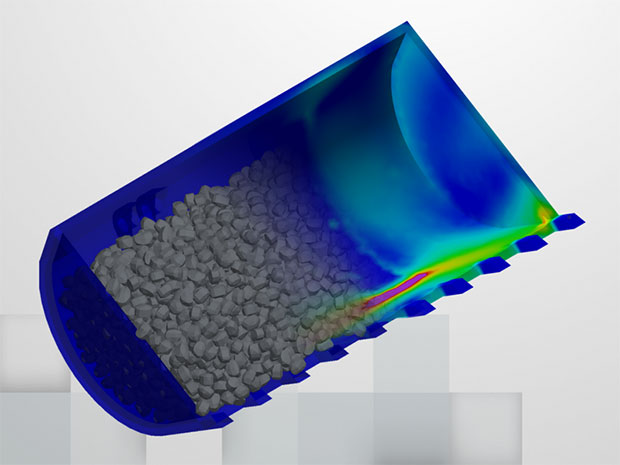Editor’s Pick: CAE Tool Integrates Discrete Element Method

The EDEM for CAE discrete element modeling (DEM) software line brings bulk material simulations to engineers using major finite element analysis and multibody dynamics systems in the the design of heavy equipment. Image courtesy of EDEM.
Latest News
May 10, 2017
 Dear DE Reader:
Dear DE Reader:
Designing truck bodies, excavators, diggers and the like offers some interesting engineering challenges. But for many heavy equipment designers predicting the effect of bulky stuff comprised of discrete elements like rocks, coal and soil on equipment can induce the agony of hand calculations and the angst of assumptions. Today’s Editor’s Pick of the Week is about a multiphysics, heavy-equipment optimization solution that sounds like it will make that agony and angstacy a thing of the past.
 The EDEM for CAE discrete element method (DEM) software line brings bulk material simulations to engineers using major finite element analysis and multibody dynamics systems in the the design of heavy equipment. Image courtesy of EDEM.
The EDEM for CAE discrete element method (DEM) software line brings bulk material simulations to engineers using major finite element analysis and multibody dynamics systems in the the design of heavy equipment. Image courtesy of EDEM.Over the years, EDEM (née DEM Solutions) has honed expertise with its highly regarded DEM (discrete element method) toolset for bulk material analysis. Eponymously named EDEM, this toolset offers a numerical method that lets you model the behavior of granular materials like rocks or particles, enabling you to simulate how materials of various sizes and shapes behave as well as how they interact with your machine designs.
EDEM recently announced plans to expand the availability of EDEM for CAE (computer-aided engineering) systems. The first two in the line are out: EDEM for ANSYS and the just released EDEM for Adams. EDEM for LMS Virtual.Lab Motion is on its way, as are versions for other finite element analysis (FEA) and multibody dynamics (MBD) platforms, according to the developer.
These versions of EDEM link with your analysis system. They provide DEM smarts and a library of thousands of material models with data on the forces and material loads that affect equipment. You select the best match material for your job, set up your bulk material simulation and run your DEM modeling in your host analysis environment. Key for you designers: No DEM expertise required.
EDEM for ANSYS integrates with ANSYS Workbench and lets you add bulk material loads as standard in ANSYS structural analyses. You can link the bulk material forces acting on equipment to other ANSYS analysis systems and use them as an input boundary condition for FEA simulations.
The version for MSC Software’s Adams MBD solution is a standalone application. It couples with Adams using the Adams Co-Simulation Interface to transfer material loads into MSC Adams, where they’re used to calculate the material’s effect on equipment dynamics.
You can learn more about EDEM for ANSYS and for Adams from today’s Editor’s Pick of the Week write-up. Make sure to hit the link to the dedicated EDEM for CAE web page at the end of the main text. These solutions sound like they rock.
Thanks, Pal. – Lockwood
Anthony J. Lockwood
Editor at Large, DE
Subscribe to our FREE magazine, FREE email newsletters or both!
Latest News
About the Author
Anthony J. Lockwood is Digital Engineering’s founding editor. He is now retired. Contact him via [email protected].
Follow DE





